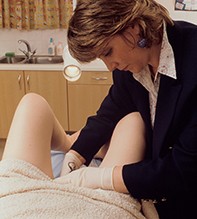Changes to the cervical cancer screening program in Australia
- HPV screening is conducted every five years in women aged 25 years and older
- women are discharged from screening when they reach their early 70s.
Australia is the first country in the world to announce large-scale changes to cervical screening as a direct response to the successful implementation of human papillomavirus (HPV) vaccination. Since the National HPV Vaccination Program began in 2007, a significant reduction has been seen in the prevalence of confirmed high-grade cervical abnormalities in young women. This, together with an accumulation of international evidence on the greater sensitivity of HPV testing (detection of HPV in cervical cells) compared with Pap testing (detection of abnormal or potentially abnormal cells from a cervical sample) in the detection of cervical intraepithelial neoplasia grade 2 or higher (CIN2+) lesions, has led to the development of new recommendations on cervical screening. These recommendations emerged from an evidence-based process of review and are that:
Picture credit: © Charles Milligan/Phototake/Diomedia.com

